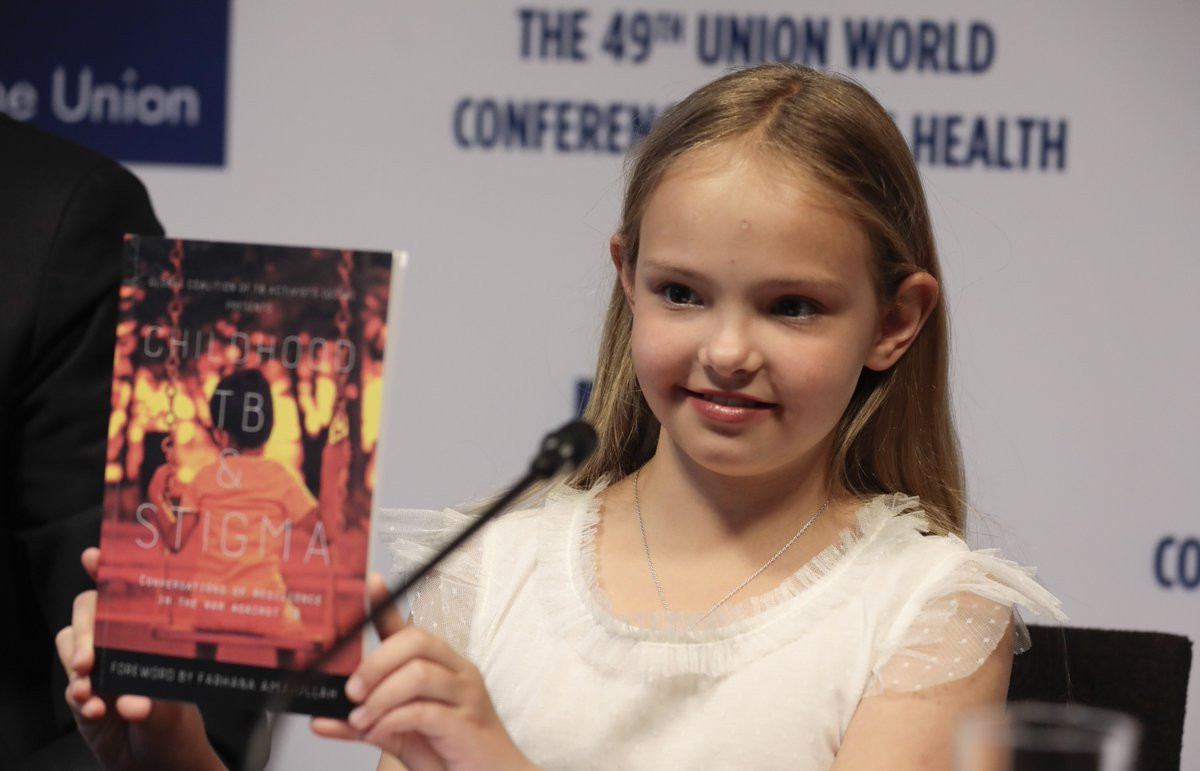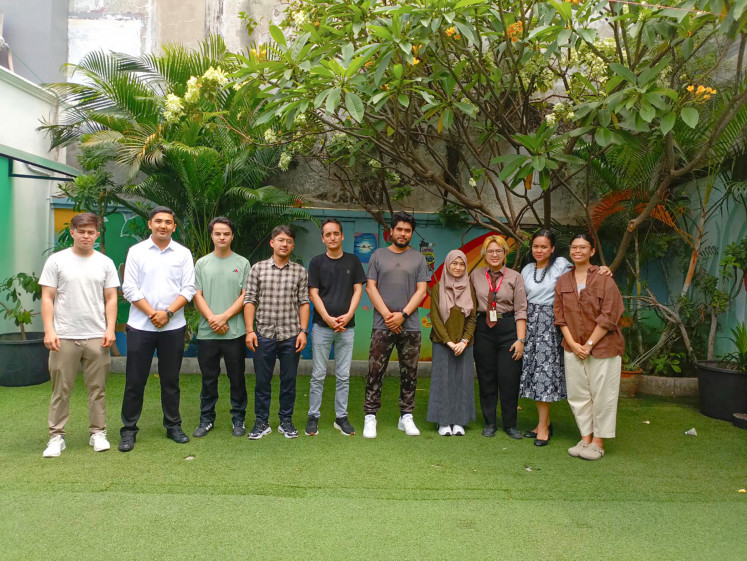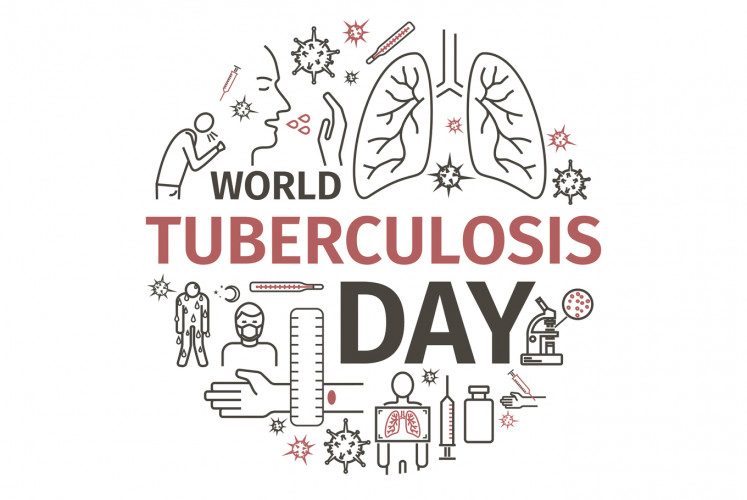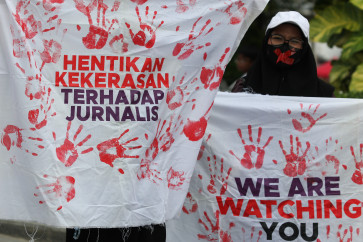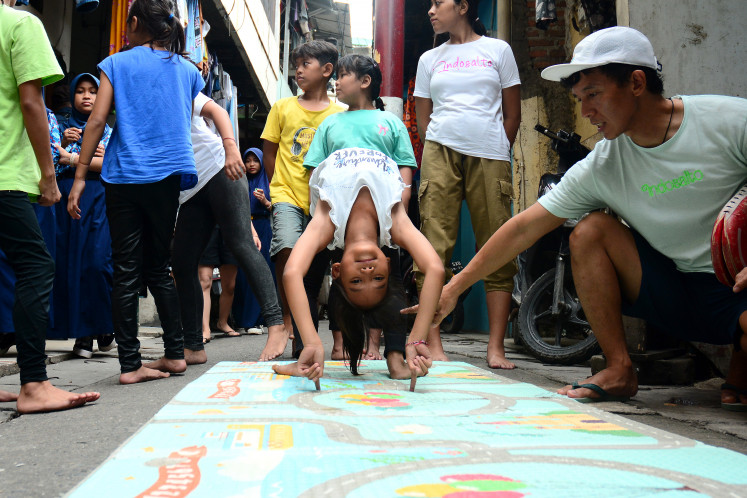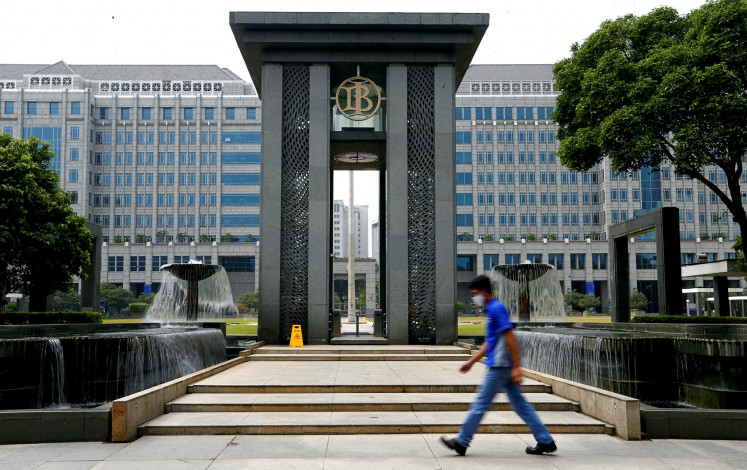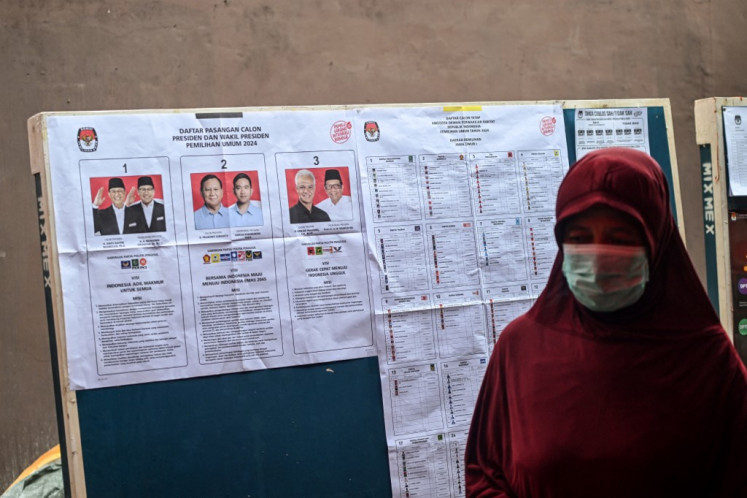Popular Reads
Top Results
Can't find what you're looking for?
View all search resultsPopular Reads
Top Results
Can't find what you're looking for?
View all search resultsIt’s time to put child TB in the global spotlight
Tuberculosis is preventable, treatable and curable.
Change text size
Gift Premium Articles
to Anyone
T
he writer was invited by the International Union Against Tuberculosis and Lung Health to attend the 49th World Lung Health Conference in the Hague and visited health facilities and research centers in the Netherlands under a media scholars program. The following is her report on World TB Day 2019, celebrated on Sunday.
Four-year-old Adiraja Bima looks weak and thin. Unlike curious and active boys of his age, Adiraja can barely walk.
Months ago, Adiraja had a high fever and his abdomen was distended, preventing him from urinating and passing his stool. He never stopped coughing.
His mother Yuni Prastika took her son to the nearest hospital where doctors carried out an x-ray of his abdomen, a sonograph and an MRI scan. He also underwent an operation on his back – a laminectomy.
The biopsy report tested positive for Tuberculosis (TB) Spondylitis. The diagnosis took one month and the doctors didn’t suspect TB at all at the beginning.
Coming from an underprivileged family, the mother believed Adiraja got his TB from her roommate.
In the spotlight: Angelina Grab (second left), a 9-year-old child TB survivor from South Africa, attends a press conference during the 49th World Lung Health Conference in The Hague, the Netherlands. She is one of the 1 million children affected by child TB worldwide. (Courtesy of The Union/-)In South Africa, Angelina Grab, 9, suffered from pulmonary TB when she was 2 years old. To make things worse, Angelina is suffering from autoimmune disease.
“My daughter had TB when she was 2 years old. She suffers from Common Variable Immune Deficiency (CVID) and was receiving immunoglobulin at the time. She had recurrent pneumonia and wasn’t gaining any weight. She weighed 8 kg when she was a 1-year-old,” said Janet Grab, Angelina’s mother.
“Being a healthcare professional myself, I could confidently address her concerns. But, my heart goes out to the children and their families in more difficult circumstances who bear the brunt of an enduring stigma every day of their lives.”
Adiraja and Angelina are among 13 children with TB from around the world featured in a book called Childhood TB and Stigma: Conversations of Resilience in the War Against TB, launched by the Global Coalition of TB Activists (GCTA) during the recent World Lung Health Conference in the Hague, the Netherlands.
The books compellingly talks about the extreme challenges that these children and their families go through and how they fight child TB.
Adiraja from Indonesia and 10 other child TB survivors from India, Mexico and other cities featured in the book could not attend the conference because of their health condition.
“To think that 650 children die from TB every day around the world, with 80 percent not even reaching the age of 5 is heartwrenching,” said Blessi Kumar, CEO of the GCTA, while accompanying Angelina at the conference.
TB is an infectious disease caused by the bacterium Mycobacterium tuberculosis, which usually affects the lungs, but it can affect virtually any part of the body. TB spreads from person to person through the air when someone sick with the disease coughs, sneezes or spits.
Key symptoms include cough, fever, night sweats and weight loss. While TB is treatable and curable in most cases, without proper treatment up to two-thirds of people with TB will die.
After India, Indonesia is the second country with the highest TB burden in the world; and an estimated TB incidence of 1.02 million cases per year, 17.8 percent of which affect children.
The number of children who became sick with TB reached 227,000 in India in 2017, while China has 100,000 children with TB; the Philippines 70,000 and Indonesia 65,000.
Until recently, child TB had not been a priority for both national and global public health. In most countries, the number of children being reported by the national tuberculosis program is far below what is estimated.
Many countries do not have sufficient information on the number of children affected by TB or the system in place to identify these children. This is in part because children are rarely infectious and consequently do not substantially contribute to the spread of the disease.
The Global Tuberculosis report 2017 stated that an estimated 1.3 million children under 5 years of age globally were household contacts of bacteriologically confirmed pulmonary TB cases and were eligible for TB preventive treatment according to policy recommendations in 2016. Of these, only 13 percent were reported to have begun preventive TB treatment.
“Children with TB rarely die when they receive standard treatment for the disease, but 90 percent of children sick with TB worldwide are left untreated,” said Paula I. Fujiwara, scientific director of the International Union Against Tuberculosis and Lung Disease.
“This neglect can no longer be excused on the grounds of economy or expediency. TB is preventable, treatable, curable. The continuing medical neglect of child TB, resulting in millions of avoidable deaths, constitutes a human rights violation by any reasonable measure.”
Tereza Kazaeva, director of the WHO Global TB Program, said ending TB in children by 2030 was an integral part of the TB Strategy, which is aligned with the Sustainable Development Goals.
“The world has committed to ending preventable deaths in children. Addressing Child TB is critical to achieving this goal,” the director said. (ste)

